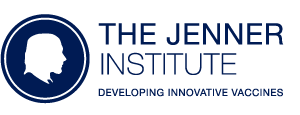Humoral SARS-CoV-2 immunogenicity wanes 3 months after heterologous inactivated vaccine followed by ChAdOx1 nCoV-19 in autoimmune rheumatic diseases.
Uea-Areewongsa P., Pinpathomrat N., Ongarj J., Sophonmanee R., Seepathomnarong P., Seeyankem B., Surasombatpattana S., Intapiboon P.
BackgroundAlongside vaccine hesitancy, impaired and waning immunity in autoimmune rheumatic diseases (ARDs) are barriers to immunization. The timeframe of immunity waning in ARD remains unclear.ObjectiveWe aimed to examine the waning of humoral immunogenicity in a cohort of ARD patients who received the heterologous inactivated vaccine followed by the adenoviral vector SAR-CoV-2 vaccine at a 3-month follow-up.MethodsThe levels of SARS-CoV-2 anti-RBD IgG were evaluated at 1 and 3 months in adults with ARDs (n = 29) and age- and sex-matched healthy controls (HC) that received the heterologous prime-boost CoronaVac vaccine followed by the ChAdOx1 nCoV-19 vaccine. Seropositivity was defined as anti-receptor binding domain (RBD) IgG levels of ≥ 7.15 binding antibody units (BAU)/mL. The kinetic properties of the vaccines were evaluated based on the ratio of anti-RBD IgG values obtained at each follow-up. Disease activity was evaluated.ResultsThe seropositivity rate was lower among patients with ARDs than among HCs (89.7% vs. 100%, p = 0.237). At 3 months, the median (IQR) anti-RBD IgG level was lower among patients with ARDs than among HCs (122.3 [30.6, 247.8] vs. 294.2 [127.4,605.7] BAU/mL, p = 0.006). Mean antibody levels in patients with ARDs decreased 3.5 (1.9)-fold within 3 months post-vaccination (122.3 [30.6, 247.8] vs. 279.9 [86,1076.5] BAU/mL, p < 0.001). Disease flare-ups occurred in three patients.ConclusionsOur findings included changes to anti-RBD IgG levels and may inform vaccination strategies. SAR-CoV2 vaccine-induced immunity was lower in patients with ARDs than in HCs and decreased within 3 months, suggesting a need for booster vaccinations.

